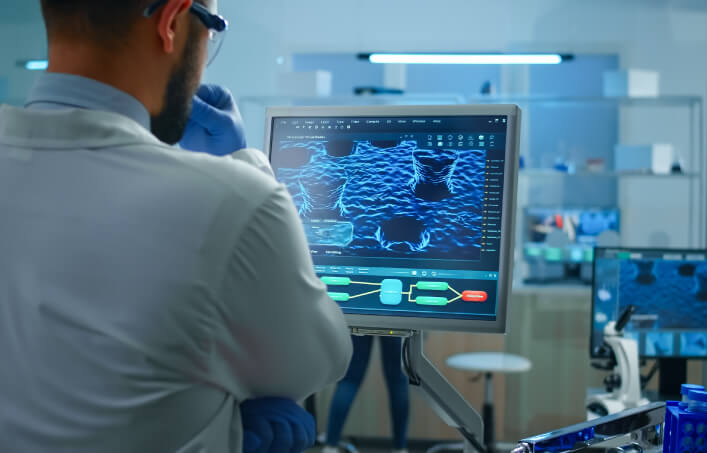Introduction
In the ever-evolving landscape of healthcare, the integration of cutting-edge technologies has become imperative to enhance diagnostic accuracy and improve patient outcomes. One such groundbreaking advancement is the incorporation of machine learning into primary care diagnostic processes. This blog explores the revolutionary impact of machine learning in reshaping how healthcare providers approach diagnosis in primary care settings.
The Current Landscape of Primary Care Diagnosis
Traditionally, primary care diagnosis has relied heavily on the expertise of healthcare professionals, often leading to variations in accuracy and efficiency. With the increasing complexity of medical information and the sheer volume of patient data, there is a growing need for tools that can assist healthcare providers in making more informed and timely decisions.
The Role of Machine Learning in Primary Care Diagnosis
Machine learning algorithms have demonstrated unparalleled capabilities in analyzing vast datasets and identifying intricate patterns that may elude the human eye. When applied to primary care diagnosis, these algorithms can process a myriad of patient data, including medical history, laboratory results, and imaging studies, to provide comprehensive insights and support accurate decision-making.
Enhancing Diagnostic Accuracy
One of the key advantages of integrating machine learning into primary care diagnosis is the significant improvement in accuracy. Machine learning models can analyze historical patient data to identify subtle correlations and trends that may indicate the presence of a particular condition. This enables healthcare providers to make more accurate and timely diagnoses, reducing the likelihood of misdiagnoses and improving overall patient care.
Streamlining Workflow and Reducing Burden
The implementation of machine learning in primary care diagnosis also streamlines the workflow for healthcare professionals. Automated analysis of routine tasks, such as reviewing lab results or medical images, allows providers to focus more on patient care and less on administrative burdens. This not only increases efficiency but also contributes to a more positive patient experience.
Early Detection of Diseases
Machine learning algorithms excel at detecting patterns indicative of diseases at early stages. This is particularly crucial in primary care, where early intervention can significantly impact patient outcomes. By identifying subtle markers in patient data, machine learning systems can assist in the early detection of conditions such as diabetes, cardiovascular diseases, and certain types of cancers.
Personalized Treatment Plans
Another compelling aspect of integrating machine learning in primary care is the ability to generate personalized treatment plans. By considering individual patient characteristics, machine learning algorithms can recommend tailored interventions, medications, and lifestyle modifications. This personalized approach enhances the efficacy of treatment and improves patient adherence.
Challenges and Considerations
While the integration of machine learning in primary care diagnosis holds immense promise, it is not without challenges. Privacy concerns, data security, and the need for continuous validation of algorithms are crucial considerations. Additionally, healthcare professionals need adequate training to interpret and integrate machine-generated insights into their decision-making processes.
The Future of Primary Care Diagnosis
As technology continues to advance, the future of primary care diagnosis seems intertwined with machine learning. The ongoing refinement of algorithms, increased interoperability of healthcare systems, and a commitment to addressing ethical considerations will play pivotal roles in shaping the trajectory of this transformative integration.
Conclusion
The integration of machine learning in primary care diagnosis marks a paradigm shift in healthcare delivery. By harnessing the power of data analytics and artificial intelligence, healthcare providers can enhance diagnostic accuracy, streamline workflows, and ultimately improve patient outcomes. As we stand at the intersection of technology and healthcare, the integration of machine learning in primary care diagnosis holds the promise of a more precise, efficient, and patient-centered approach to healthcare delivery.










